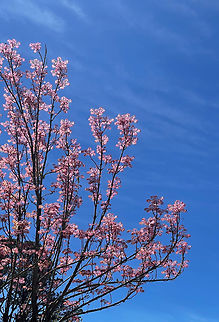
Appearance
It is a deciduous tree growing to 25 metres tall with a trunk up to 70 cm diameter. The bark is brown, smooth on young trees, becoming scaly to shaggy on old trees. The leaves are pinnate, 50–70 cm long and 30–40 cm broad, with 10–40 leaflets, the terminal leaflet usually absent but sometimes present ; the individual leaflets 9–15 cm long and 2.5–4 cm broad, with an entire or weakly serrated margin. The young leaves are reddish-brown or purple, and have a smell. The flowers are produced in summer in panicles 30–50 cm long at the end of a branch; each flower is small, 4–5 mm diameter, with five white or pale pink petals. The fruit is a golden capsule 2–3.5 cm long, containing several winged seeds.It is similar to ''Ailanthus altissima'' in appearance, but their leaves smell differently. Toona has rough bark, while ''A. altissima'' has smooth bark.
Food
The young leaves of ''T. sinensis'' are extensively used as a vegetable in Chinese cuisine; they have a floral, yet onion-like flavor, attributed to volatile organosulfur compounds. Plants with red young leaves are considered of better flavour than those where the young leaves are green.In China and Southeast Asian countries such as Malaysia, the young leaves of ''Toona sinensis'' or commonly known as Chinese Mahogany is used to make Toona paste, which is used as a condiment to serve with plain rice porridge as breakfast and simple meals, or to enhance the flavour of a dish or soup. Common dishes made with Toona paste are Chinese Mahogany fried rice, Chinese Mahogany beancurd, and Chinese Mahogany mushroom soup.
The leaves contain Vitamin E, and high amounts of iron, calcium and chlorophyll.
Cultural
In Chinese literature, ''Toona sinensis'' is often used symbolically, with a mature tree representing a father. This manifests itself occasionally when expressing best wishes to a friend's father and mother in a letter, where one can write "wishing your ''Toona sinensis'' and daylily are strong and happy" , with ''Toona sinensis'' metaphorically referring to the father and daylily to the mother.References:
Some text fragments are auto parsed from Wikipedia.